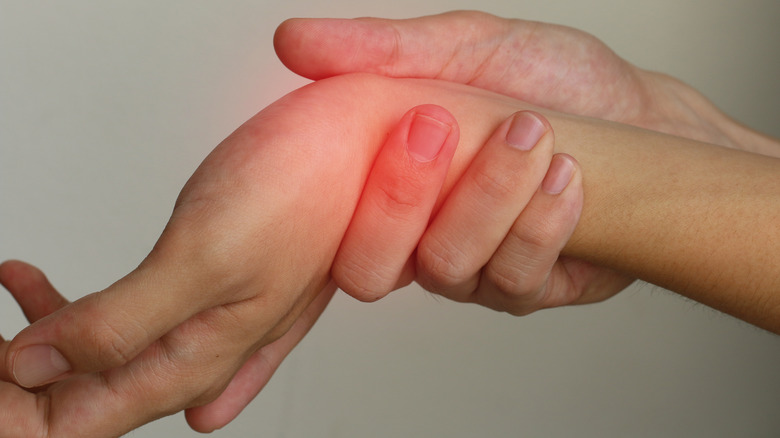What Happens To Your Thumbs When You Text Too Much?
Smartphones have been around long enough for many of us to experience some negative effects from overuse. Some conditions can impact the neck and back, but did you know that you can also develop issues with your thumbs from using your smartphone too much?
The condition has many names including texting thumb, gamer's thumb, and de Quervain's tenosynovitis (via Mayo Clinic). Whatever name you choose to call it, the ailment is known as a repetitive stress injury that can cause a significant amount of discomfort if not treated.
The most common symptom includes pain near the joint of your thumb that worsens with increased movement. This pain can also be accompanied by swelling, and in some cases, might feel like your thumb "sticks" or catches when you move it. It may also be difficult to move your thumb or wrist while performing certain actions, like texting or grabbing various small objects.
Treatment, rest, and exercise can help ease thumb pain
De Quervain's tenosynovitis occurs when the tendons in the thumb become inflamed from constant use. Therefore, one of the best ways to ease the pain is to cut back on movements that trigger flare-ups. Besides curtailing use, other treatments for texting thumb include placing an ice compress on the joint for 15 minutes every several hours. Over-the-counter non-steroidal anti-inflammatory medications are also recommended for pain relief. A wrist splint that immobilizes the thumb is also an option (via Harvard Health Publishing).
Exercising your thumb after the pain and swelling have subsided is the best way to keep pain at bay. One simple and easy exercise you can do is to massage your hand and joint while gently bending your thumb back a few times throughout the day.
It's important to rest and exercise your thumb regularly because the condition can worsen over time if left untreated. The inflammation can spread deeper into the thumb or up into the forearm causing more pain. It can also lead to scarring, which limits mobility even more. Should you experience ongoing symptoms or have additional questions, do consult with a physician for further treatment options.


